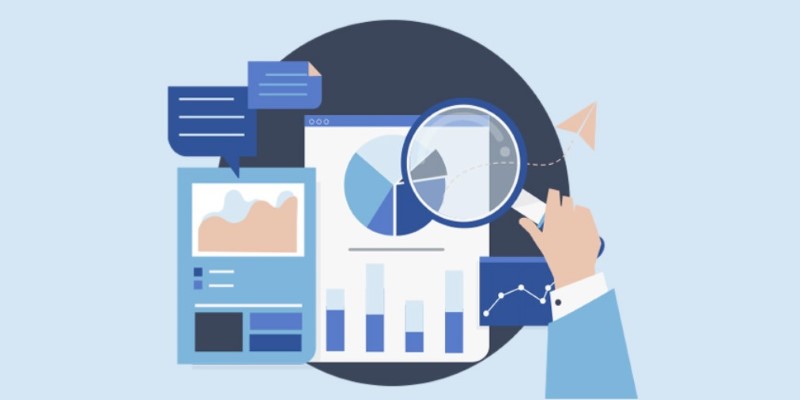A composite index might sound complex, but its simply a tool that combines multiple indicators to provide a clearer picture of a market, sector, or economic performance. Unlike single-variable indicators, composite indices pull together a range of data points, giving a more comprehensive understanding of whats really going on in a specific area.

Think of it as zooming out to see the big picture rather than focusing on a single detail. In this article, well dive into what composite indices are, the different types available, and some real-world examples that showcase their value.
At its core, a composite index is a statistical tool that combines multiple indicators into a single measurement. Its widely used in financial markets, economics, and other fields where multiple variables need to be considered together to provide meaningful insights. A composite index is often expressed as a weighted average, where each component is assigned a value based on its importance. This allows analysts and investors to get a snapshot of performance trends, whether in a stock market, an economic sector, or another domain.
The primary purpose of a composite index is to reduce complexity. Instead of tracking dozens of individual metrics separately, a composite index consolidates this information, offering a simplified yet holistic view of a given situation.
Composite indices arent one-size-fits-all; they vary depending on what they measure and how they are constructed. Broadly, composite indices can be classified into three categories:
Financial market composite indices are perhaps the most recognized type. These indices track the performance of a group of stocks, often representing a specific sector, market, or country. Examples include the S&P 500, which aggregates the performance of 500 large-cap U.S. companies, and the NASDAQ Composite, which focuses on tech-driven stocks.

Economic composite indices combine various economic indicators to gauge the health of an economy. A prime example is the U.S. Conference Board's Leading Economic Index (LEI), which predicts future economic activity by combining ten indicators, such as unemployment claims, new orders for manufacturing, and stock prices. Economic composite indices help policymakers, analysts, and businesses make informed decisions based on forward-looking trends.
These indices are tailored to specific industries or objectives. For example, environmental, social, and governance (ESG) indices combine criteria across sustainability, ethical governance, and social impact to rank companies. Other sector-specific indices might focus on things like housing affordability, consumer sentiment, or technological adoption rates.
Calculating composite indices involves several steps, focusing primarily on weighting each component. Heres a simplified breakdown:
First, each component is normalized to a common scale, ensuring that different types of data (like percentages, dollars, etc.) are comparable. This is usually done by converting each components value into a standardized form.
Next, each normalized value is assigned a weight based on its importance to the overall index. For example, in an economic composite index, employment rates might be weighted more heavily than other factors due to their strong influence on economic health.
Finally, the weighted values are summed to produce the composite index value. This final number reflects the combined performance of all the included components, providing a consolidated view of the tracked area, whether its market performance, economic health, or another domain.
Composite indices play a crucial role in various fields by providing a consolidated view of multiple factors. Here are some notable real-world examples that illustrate their practical applications:
The S&P 500 Index is one of the most recognized financial composite indices globally. It tracks the performance of 500 large-cap U.S. companies listed on stock exchanges, including well-known names like Apple, Microsoft, and Amazon. This index is considered a benchmark for the overall U.S. stock market and is widely used by investors to gauge market trends and make investment decisions. By reflecting the health of a broad segment of the economy, the S&P 500 helps investors understand how major companies are performing collectively rather than focusing on individual stocks.

Developed by the United Nations, the Human Development Index (HDI) is a composite index used to measure and compare the overall development of countries. It combines three key dimensions: health (life expectancy at birth), education (mean years of schooling and expected years of schooling), and standard of living (gross national income per capita). The HDI provides a more holistic view of human development than just economic metrics alone, offering insights into the quality of life and societal progress across different nations.
The Global Innovation Index (GII) assesses and ranks countries based on their innovation capabilities and performance. It aggregates data from various indicators, including R&D expenditure, patent activity, and the quality of universities. The GII highlights how well countries foster innovation, which is critical for long-term economic growth and competitiveness. This index is valuable for policymakers and business leaders looking to understand which countries are leading in innovation and where improvements can be made.
The Consumer Confidence Index (CCI) measures consumers' confidence in their country's economic performance. It is based on surveys that ask consumers about their perceptions of current economic conditions and their expectations for the future. A high CCI indicates that consumers are optimistic about economic prospects, which can lead to increased spending and economic growth. Conversely, a low CCI may signal economic uncertainty or downturns.
Composite indices may appear complex, but their purpose is straightforward: to combine multiple data points into a single, understandable measure. They reduce the noise and complexity of tracking many variables separately, providing a clearer view of trends, performance, and risks. From financial markets to measuring global innovation, these indices offer critical insights that drive decisions across industries and geographies.
While composite indices have their drawbackslike potential biases in weightingthey remain an indispensable part of modern analysis. Whether youre an investor, a policymaker, or just someone keen to understand economic trends better, composite indices offer a window into deeper and more actionable insights.

By Tessa Rodriguez/Sep 24, 2024

By Celia Shatzman/Sep 18, 2024

By Isabella Moss/Sep 17, 2024

By Vicky Louisa/Sep 05, 2024

By Paula Miller/Sep 24, 2024

By Elena Davis/Sep 24, 2024
By Celia Shatzman/Sep 17, 2024

By Juliana Daniel/Sep 24, 2024

By Pamela Andrew/Aug 24, 2024

By Maurice Oliver/Sep 17, 2024

By Susan Kelly/Sep 06, 2024

By Noa Ensign/Sep 16, 2024